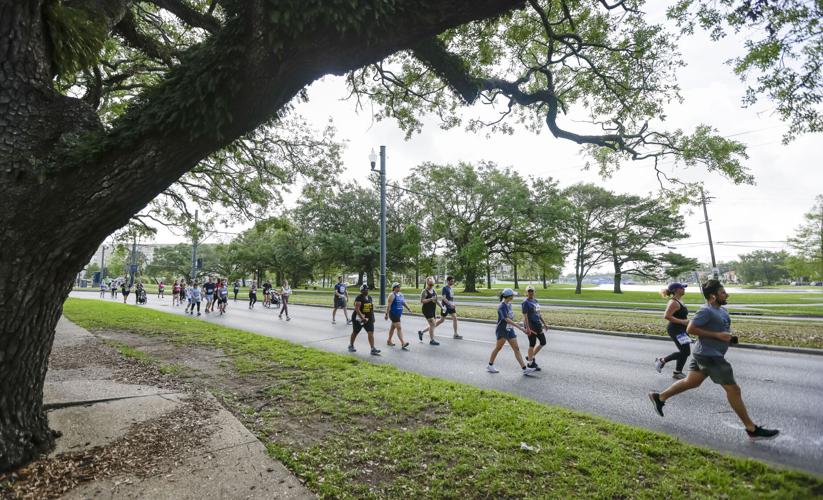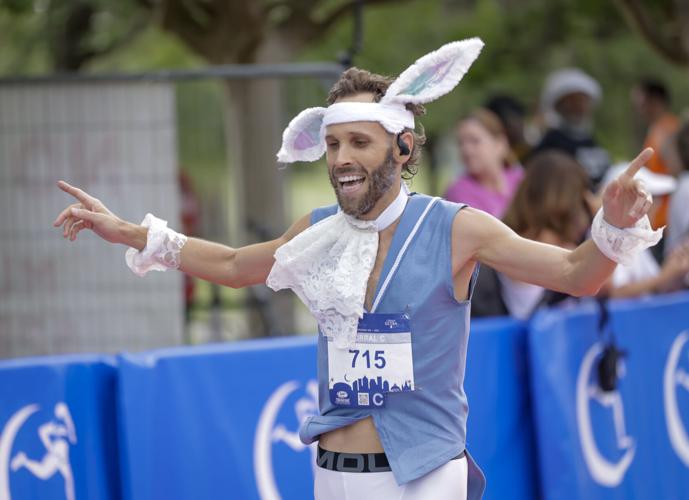Locals know that the weeks between Mardi Gras and Easter mark the unofficial "New Orleans New Year."
It’s our time for setting goals and prioritizing wellness, which makes the timing of the Crescent City Classic pretty perfect.
Whether it’s your first time running a 10K or you’re just looking to shave a few minutes from your finish time, fueling your body well can serve to up your game, maximize energy, and aid in muscle recovery.
There’s a lot to consider when training for a race, so to streamline the focus, here are three key priorities to keep in mind while training for a race of this length (10 kilometers, or 6.2 miles): Optimize hydration, pre-run fueling, and — by all means — nothing new on race day.
Hydration is No. 1
Staying well-hydrated is essential for athletic performance and also to ensure that you finish the race safely. Even low-level dehydration can leave us feeling weak, lightheaded and more susceptible to muscle cramping. Severe dehydration can result in heat exhaustion or heat stroke.
If you’re not accustomed to drinking fluids during your runs, start practicing now, even during your shorter training runs (keeping in mind rule No. 3: nothing new on race day).
Don't wait until you feel thirsty — instead, set up a hydration schedule to stay ahead of the curve, starting even before you head out for a run: Aim for one to two cups of fluids in the hour or two before your run, then 4 to 8 ounces of fluid every 15 to 20 minutes throughout.
It’s important to note that "hydration" involves electrolytes, as well as fluids.
Our sweat is comprised of mostly water, of course, but it’s also rich in electrolytes — namely sodium — along with smaller amounts of electrolytes like potassium and calcium. These electrolytes help to regulate our body’s fluid balance, also playing a role in muscle contraction and cramping.
Add electrolytes
If you plan to finish the Classic in under an hour or so, then sipping water throughout the race is fine. But if your estimated finish time is 60 to 75 minutes or longer (or if it’s particularly hot and/or humid out), incorporating an electrolyte drink becomes even more important.
Take advantage of the hydration stations located along the route. If possible, find out what drinks will be provided (the Crescent City Classic will be providing water at hydration stations at every mile along the route).
Most of us don’t need the added sugars of typical sports drinks, so my preference is to plan for your own lower-sugar electrolyte-rich fluid replenishment throughout the race.
Carrying a water bottle with added electrolytes (my favorites include Nuun tablets and MyHy Zero Sugar electrolyte packets) makes it easy to incorporate electrolyte-rich hydration without the added sugar or artificial food dyes.
Have a snack
While a 10K is short enough that most people don't need to eat during the race, having a pre-race meal or snack can help to maximize energy and performance — and fend off mid-run hunger pangs.
Plus, while you may not be accustomed to eating before your regular morning workouts, you'll likely be waking up earlier on race day to get to the starting line on time.
Staying with the theme of nothing new on race day, start having your pre-race meal or snack before your training runs — again, even before your shorter training runs. Everyone differs in their level of gastrointestinal sensitivity, and it’s important to know how specific foods will affect us.
The ideal pre-race fueling contains energy-boosting carbohydrates along with some protein and fat. Examples include cheese toast, peanut butter or almond butter on whole-grain waffle or sandwich, or Greek yogurt or cottage cheese with fresh fruit.
Timing is key: If it’s a bigger meal, aim for at least an hour or two before start time to allow time for proper digestion. For smaller snacks, 30 to 60 minutes pre-run is generally fine.
Limit those fibers
For those with a sensitive stomach, it may be helpful to limit fiber-rich foods like beans and vegetables, and also deep-fried or heavily spiced foods before a run — they can leave us feeling nauseous — or worse, looking for a restroom for an emergency pit stop.
The good news is that we don’t need to overthink it to fuel our bodies well for a 10K race. But with just a bit of focus on nutrient timing and quality we can get that little extra edge to help us finish quicker, stronger and still energized to enjoy the post-race celebrations.
If you're looking for a training schedule, the Crescent City Classic creates a good one every year. Visit ccc10k.com for the day-by-day calendar.







